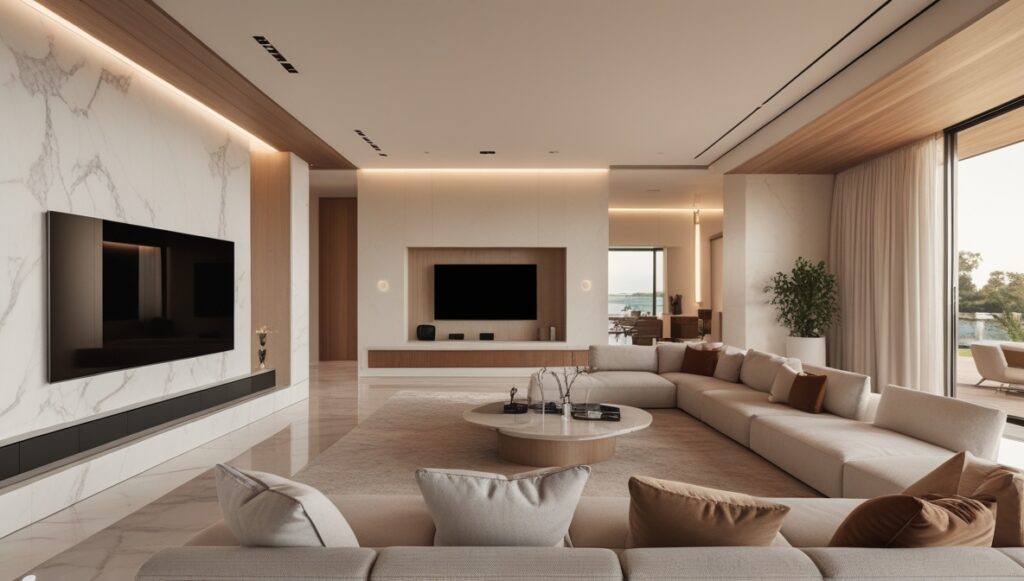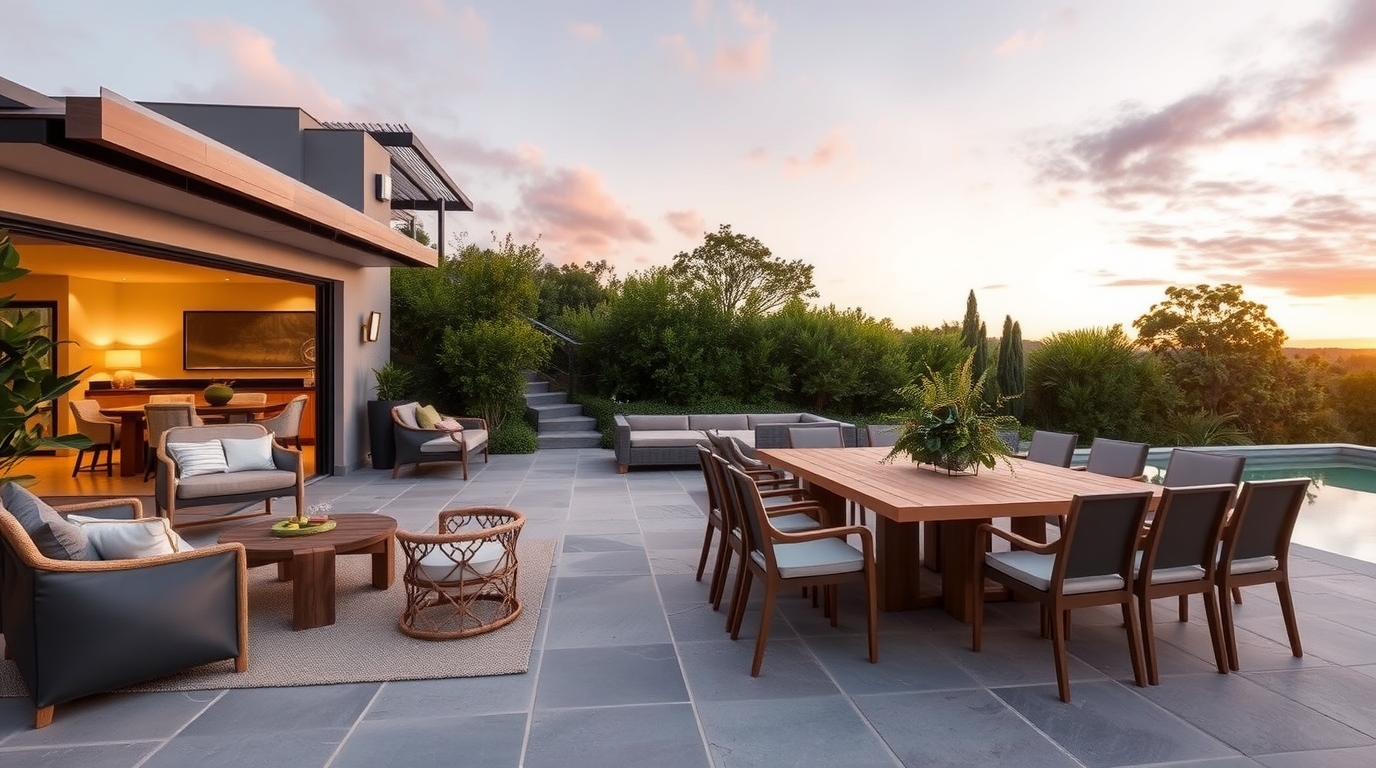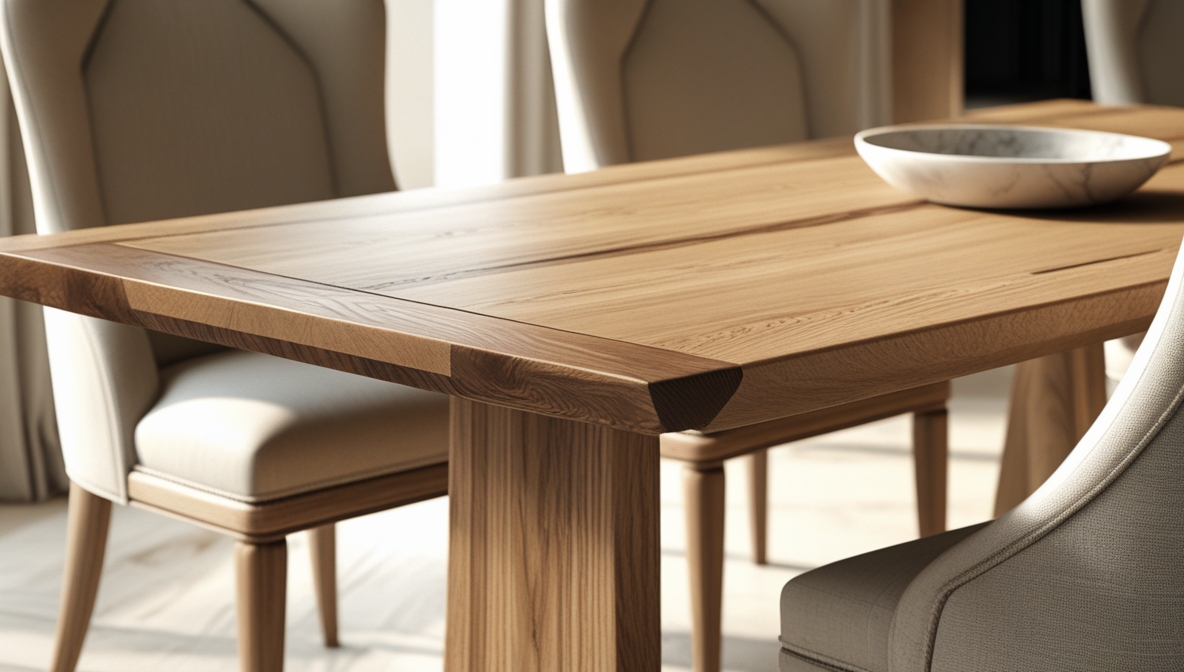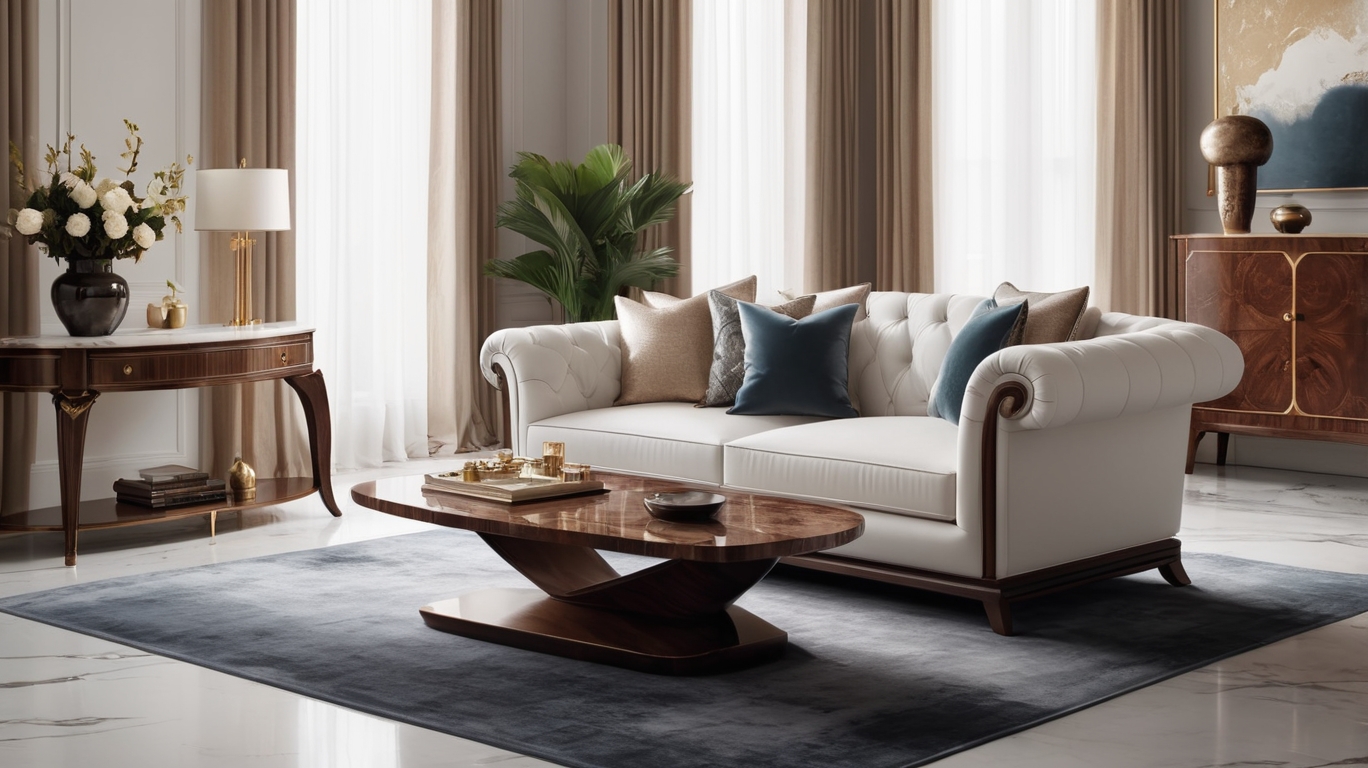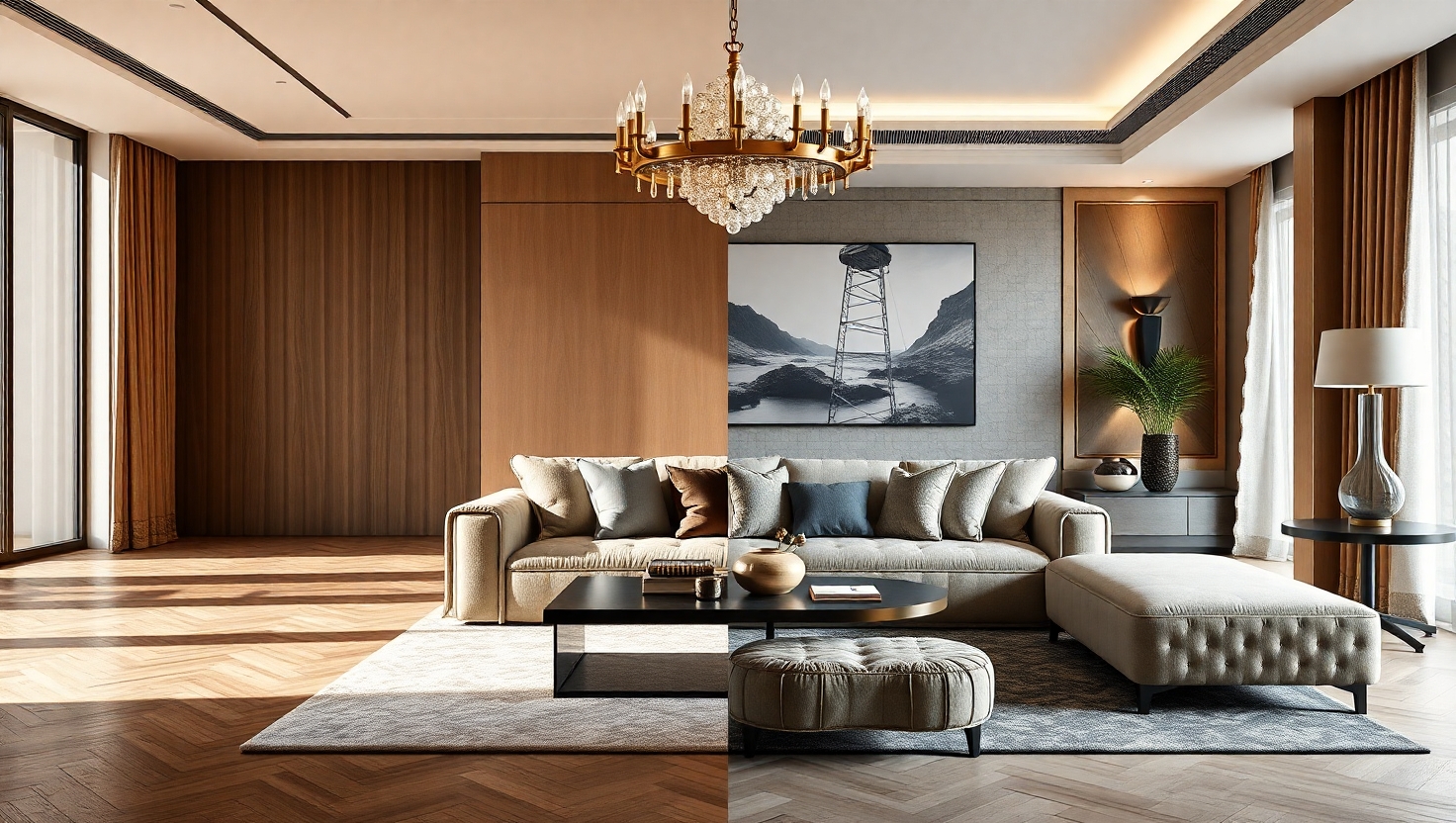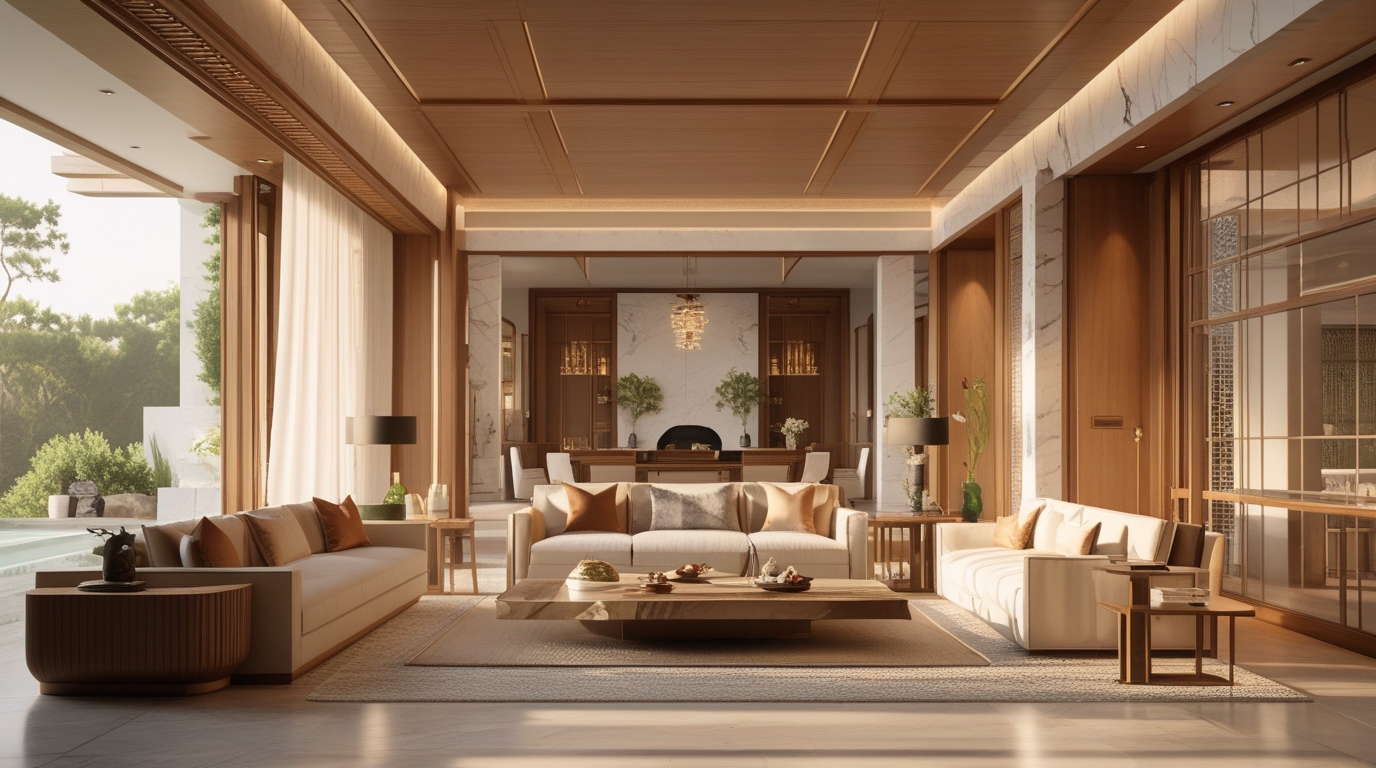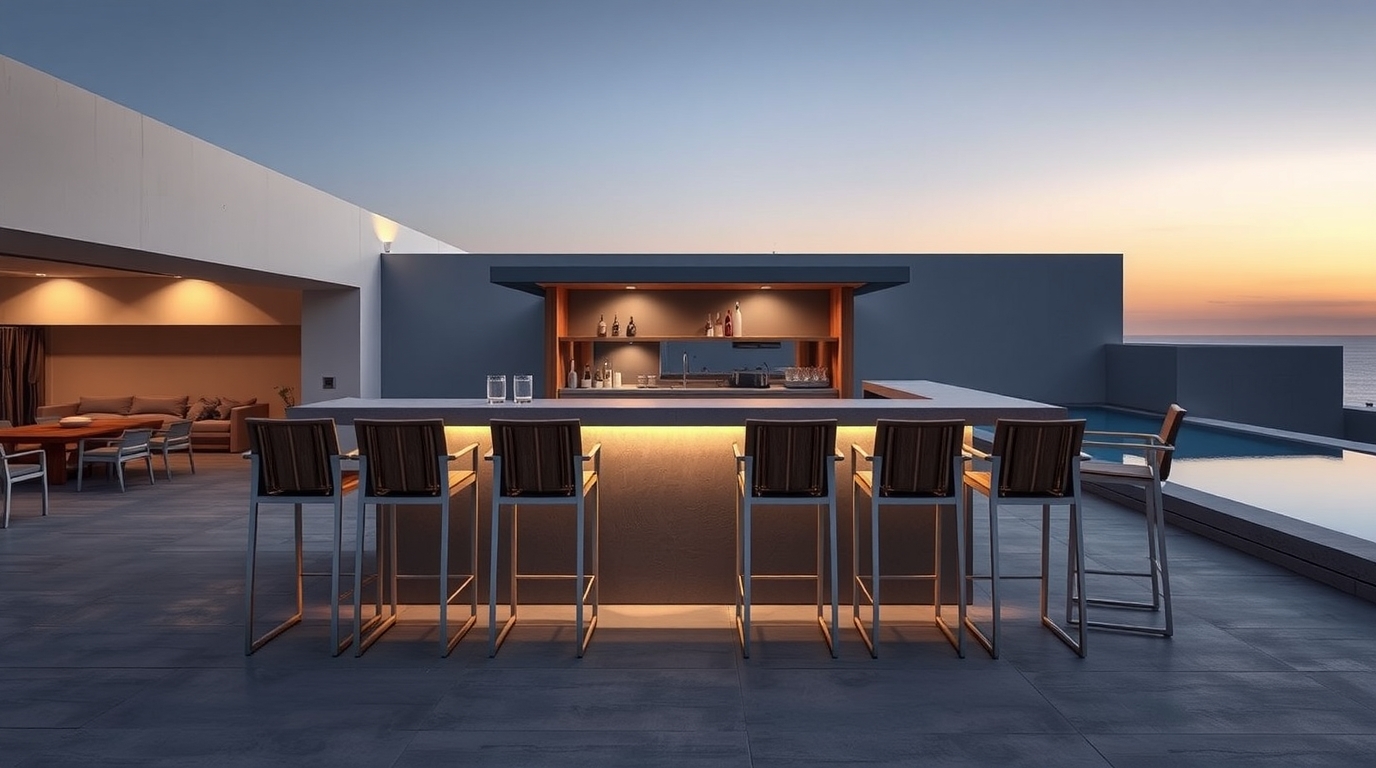The true hallmark of luxury has always been balance. From the symmetry of classical architecture to the restrained elegance of minimalist modernism, the greatest interiors have never been about excess. They are about harmony—an unbroken rhythm between the materials, textures, and details that together create a sense of refinement. In the twenty-first century, the test of this balance is no longer limited to timber, stone, or fabric. The presence of technology has become the defining challenge. When introduced poorly, it disrupts and distracts. But when handled with subtlety and care, technology becomes a silent partner—complimenting design rather than competing with it.
For affluent homeowners, this distinction is crucial. Nobody invests in bespoke joinery, handwoven rugs, or Italian marble floors only to have the effect diminished by bulky screens, tangled wires, or obtrusive control panels. Luxury clients want the confidence that their homes will remain sanctuaries of elegance, even as they embrace the conveniences of modern living. Achieving this requires a philosophy of integration that prioritises design first, allowing technology to follow gracefully.
Design First, Devices Second
The mistake too often made in the luxury market is to treat technology as the star of the show. Walls dominated by screens or racks of gadgets on display might thrill a technophile, but they are alien to the language of luxury interiors. True refinement lies in restraint. The role of design professionals is to consider the aesthetic narrative of a space first, then allow technology to weave itself quietly into the background.
This philosophy is particularly evident in high-end residential projects where living rooms must serve as both entertaining spaces and personal retreats. A carefully proportioned fireplace, statement artwork, or custom sofa is never upstaged by a screen. Instead, the latest technologies—OLED televisions that disappear into cabinets, projectors hidden within ceiling recesses, or mirrors that double as displays—ensure that design remains primary, technology secondary. The result is an interior that feels timeless, even though it is underpinned by innovation.
The Power of Invisibility
Invisibility has become the guiding principle of technology in luxury settings. The most successful integrations are those that cannot be seen at all until required. This is particularly important in Australia, where open-plan living and outdoor entertaining demand uncluttered spaces. Clients expect simplicity, not walls dominated by equipment.
Invisible speakers, embedded lighting, retractable screens, and hidden wiring channels allow interiors to retain their purity. In bathrooms, for example, mirrors now feature integrated displays that vanish when not in use. In kitchens, benchtops conceal wireless charging zones and appliances retract into cabinetry. The luxury is not in flaunting technology but in knowing it is always available without being visible. This balance allows craftsmanship, materials, and architectural lines to speak without interruption.
The Aesthetic of Subtlety
Even when technology is visible, it must adopt an aesthetic of subtlety. Design-conscious homeowners reject the plastic casings and cluttered interfaces of mass-market products. Instead, they demand finishes that align with their interiors: brushed metal, timber veneers, or fabric coverings that harmonise with their décor. Many of the world’s leading technology companies now collaborate directly with interior designers to produce equipment that reads as part of the room’s furniture rather than an alien object within it.
Lighting is an excellent example. Smart lighting systems allow for complex scenes, controlled by phones or voice commands, yet the fittings themselves are often reduced to slender tracks, recessed LEDs, or sculptural pendants. The focus is on the effect, not the gadget. Similarly, climate control systems are designed to be felt, not seen—delivering comfort without announcing their presence.
Respecting Architectural Integrity
Technology that competes with design usually does so because it ignores the architectural integrity of a space. A room defined by heritage plasterwork or contemporary minimalism should not be marred by oversized devices that fight for attention. Respect for architecture means tailoring technology so that it aligns with the character of the home.
This often requires customisation. Bespoke cabinetry, integrated wall panels, and tailor-made mounting systems ensure technology never feels like an afterthought. Whether it is a concealed home office in a penthouse or a discreet media room in a heritage-listed property, the best solutions are those where the architecture remains unbroken. This level of customisation defines true luxury because it demonstrates that every detail has been considered, every intrusion avoided.
Emotional Resonance and Lifestyle Flow
Beyond appearance, the deeper success of technology lies in its ability to enhance lifestyle flow. Luxury is emotional, not mechanical. It is the feeling of ease when arriving home to a perfectly lit environment, or the sense of serenity when music drifts through a space without a visible source. When technology compliments design, it reinforces these emotions. When it competes, it creates unease.
Luxury homeowners are increasingly investing in wellness technologies—systems that purify air, adjust circadian rhythms, or regulate acoustics. These are invisible by nature, yet profoundly impactful. They do not compete with design but rather support the underlying purpose of the interior: to make people feel better in their own homes. This emotional resonance is the ultimate test of harmony between design and technology.
Future-Proofing Elegance
One of the anxieties homeowners often express is that technology will age faster than design. A marble bench top may last fifty years, but a smart device might feel outdated in five. For technology to truly compliment design, it must also respect longevity. Modular, upgradeable systems provide the answer. By ensuring that wiring, interfaces, and software can be updated without disturbing the aesthetic, designers create interiors that are both future-proof and timeless.
Forward-thinking architects now design homes with “technology channels” built into walls and floors—discreet conduits that allow new cabling or devices to be installed without disruption. This structural foresight ensures that luxury interiors retain their integrity even as technology evolves. In this sense, complimenting design is not only about appearance but about respecting the permanence of craftsmanship.
The International Perspective
Globally, the world’s most prestigious developments highlight the principle of technology serving design. In London, new Mayfair residences feature art installations that double as screens. In Dubai, ultra-luxury villas integrate voice-activated systems that respond in multiple languages, yet are accessed through minimal interfaces. In New York, penthouses hide entire server rooms behind custom cabinetry, ensuring that technology operates at the highest level without ever intruding into sight.
In Australia, the focus has been on lifestyle. Coastal residences on the Gold Coast or Sydney Harbour integrate smart shading, automated outdoor kitchens, and invisible audio to serve an indoor-outdoor lifestyle. Here, technology compliments the national preference for open, sunlit spaces rather than competing with them. This localisation of international innovation demonstrates that the principle of balance can adapt to different contexts.
Case Studies of Compliment, Not Competition
Take, for example, a Melbourne home where the library walls are lined with handcrafted timber shelving. Rather than disrupt this rhythm with a bulky television, designers embedded a discreet screen behind sliding panels. When closed, the room is a sanctuary of books and craftsmanship. When opened, it transforms into an intimate media space. Technology is present but never intrusive.
Or a Brisbane penthouse where the dining room chandelier is not only a sculptural centrepiece but also a smart lighting fixture capable of adjusting brightness and warmth to suit different occasions. Guests marvel at the beauty of the piece without realising it is also an advanced piece of technology. Here, design is celebrated, technology hidden within.
The Path Forward
As smart technologies become even more advanced—with artificial intelligence, augmented reality, and predictive systems on the horizon—the temptation will be to make them louder and more visible. But in luxury interiors, the opposite remains true. The future lies in making technology so seamless that it disappears into the design narrative. It will anticipate, respond, and support, all while allowing architecture, materials, and craftsmanship to take the spotlight.
Ultimately, technology should be felt, not flaunted. It should reassure without demanding attention, empower without overwhelming, and compliment design with quiet authority. When this is achieved, the result is a home that is not only technologically advanced but also timelessly elegant.
Conclusion
Luxury interiors are not stages for gadgets. They are sanctuaries of refinement. Technology that compliments design respects this truth. It withdraws into the background, serving silently and gracefully. It preserves architectural integrity, enhances emotional resonance, and ensures future-proof elegance. Above all, it upholds the principle that beauty comes first, convenience second.
For discerning homeowners, this balance defines true luxury. The home becomes not only a showcase of craftsmanship but also a symphony of intelligence, comfort, and ease—where technology supports design, never competes with it.
Discover how The Exclusive Home can help you achieve interiors where timeless design and intelligent living exist in perfect harmony.

